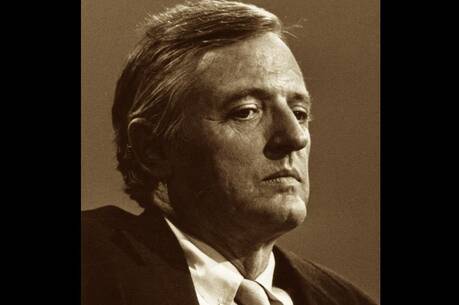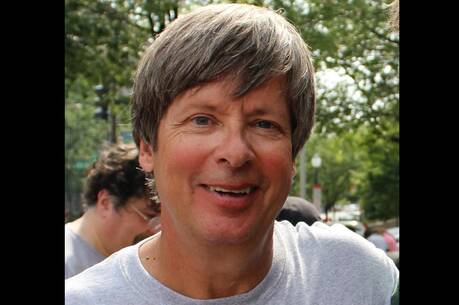Yitzhak Rabin: the spirit of Israel
Yitzhak Rabin’s life is fundamentally the story of Israel in the 20th century. Born in 1922 in Jerusalem, Rabin studied agriculture in a kibbutz east of Tel Aviv, enlisted in the Palmach, the pre-national military strike units formed to confront possible Nazi attacks, and fought alongside the British in Syria and Lebanon against troops loyal to Vichy France. Possessing keen analytical skills, Rabin rose through the Palmach’s ranks. He demonstrated these skills militarily during key operations of the War of Independence (1947-48), transitioned from the Palmach to the newly declared Israel Defense Forces and concluded the war as a lieutenant colonel in the supreme high command.
In October 1949, Rabin went against the wishes of Prime Minister David Ben-Gurion and attended the farewell rally of Palmach soldiers. This decision sidelined his advance in the I.D.F. for more than a decade. In 1964, Ben-Gurion’s successor, Levi Eshkol, redeemed Rabin by appointing him chief of staff for the I.D.F. Soon, Rabin was determining Israel’s national security policy and oversaw its victory in the Six-Day War against Egypt, Jordan and Syria. Success did not engender contentment over his role in the events that led to war but precipitated a brief period of physical exhaustion and anxiety, a factor his enemies would later use against him. Still, Rabin persevered. From 1968 to 1973, he effectively represented Israel to the United States, polishing his diplomatic skills. Soon after his return home, he defeated his archrival Shimon Peres as Labor Party leader and led his party to parliamentary victory. Rabin’s first tenure (1974-77) as Israel’s prime minister, the first Israeli-born leader to win the position, was marked with highs and lows, the latter resulting from his frankness and often brutal honesty. In December 1974, clashes with settlers highlighted internal tensions that never went away. In May 1977, political scandals coupled with the nation’s fatigue over 29 years of Labor hegemony led to his unseating. Still, Rabin remained in government as a member of the Knesset and became Minister of Defense (1984-90). In December 1987, his hardline stance, which permitted the use of force against demonstrators during the First Intifada, seemed uncharacteristic of his leadership. In October 1992, when Labor won the election, Rabin returned to power as prime minister. His years of experience in politics enabled him now to view the Israeli-Palestinian situation differently. Rabin chose a path of peace and negotiation.
It is at this point that Itamar Rabinovich, the former Israeli ambassador to the United States and chief negotiator with Syria from 1992 to 1996, became closely associated with Rabin and his government. Rabinovich offers his insights into Rabin’s life in the new biography Yitzhak Rabin: Soldier, Leader, Statesman. According to Rabinovich, Rabin oversaw the complex negotiations with the Palestine Liberation Organization, Jordan and Syria. Yearning to find a solution but uncommitted to any specific path, Rabin also engaged Joel Singer, a retired I.D.F. colonel, to explore alternatives to those being more openly discussed. The end result was the Oslo Accords (1993) signed in Washington between Rabin and Yasser Arafat. This created the Palestinian Authority and paved the way for limited Palestinian self-rule and determination. Other agreements followed. In his speech in July 1994, marking the end of decades-long conflict between Jordan and Israel, Rabin declared, “We are launching today a war that has not killed and wounded, no blood and suffering, the war for peace.” In December 1994, Rabin, Peres and Arafat shared the Nobel Peace Prize for their peace efforts.
Not everyone was pleased by Rabin’s efforts. Opposition groups protested, carrying placards that portrayed Rabin wearing a SS uniform and Arab headgear. They also labeled Rabin’s government a Judenrat, echoing the negative label put on so-called compliant Jewish councils in Nazi-controlled ghettos. In particular, Rabinovich focuses on three events that foreshadowed the violence that would later tragically erupt: 1) a protest in March 1994 in Ra’anana near Tel Aviv in which protestors marched with a gallows and a coffin bearing the inscription, “Zionism’s murderer”; 2) a Sept. 10, 1995, assault on Rabin by Rabbi Natan Ophir at the Wingate Institute near Tel Aviv, during a rally of the Association of Immigrants from the United States and Canada; and 3) an Oct. 5, 1995, protest in Jerusalem’s Zion Square following the Knesset’s approval of the Oslo II Interim Agreement. By Nov. 4, 1995, the enmity had reached its apex when Yigal Amir, a 24-year-old law student, fired three bullets into Rabin’s back, killing the prime minister. Rabinovich alludes to the possibility of lax security and the belief that a Jew would never assassinate another Jew. In the 1970s, Rabin had denounced the ideology and violence of extreme groups including the right-wing Gush Emunim as a threat to Israeli democracy but, at the time, feared entities such as the P.L.O. even more. In the end, the enemy came from within.
Rabinovich has produced an immensely engaging study of Yitzhak Rabin. The subtitle, “Soldier, Leader, Statesman,” captures the focus of Rabinovich’s insightful narrative. Little is said about Rabin’s personal side or family life. Nevertheless, the intricate weaving of complex diplomatic and political history in which Rabin was a central figure is extremely well done. Rabinovich’s coverage of Israel following Rabin’s assassination also speculates how the prime minister’s death influenced the current complex situation of the Middle East. It is certainly required reading for anyone interested in Israel and the Middle East today.
This article also appeared in print, under the headline “The spirit of Israel,” in the May 29, 2017, issue.









